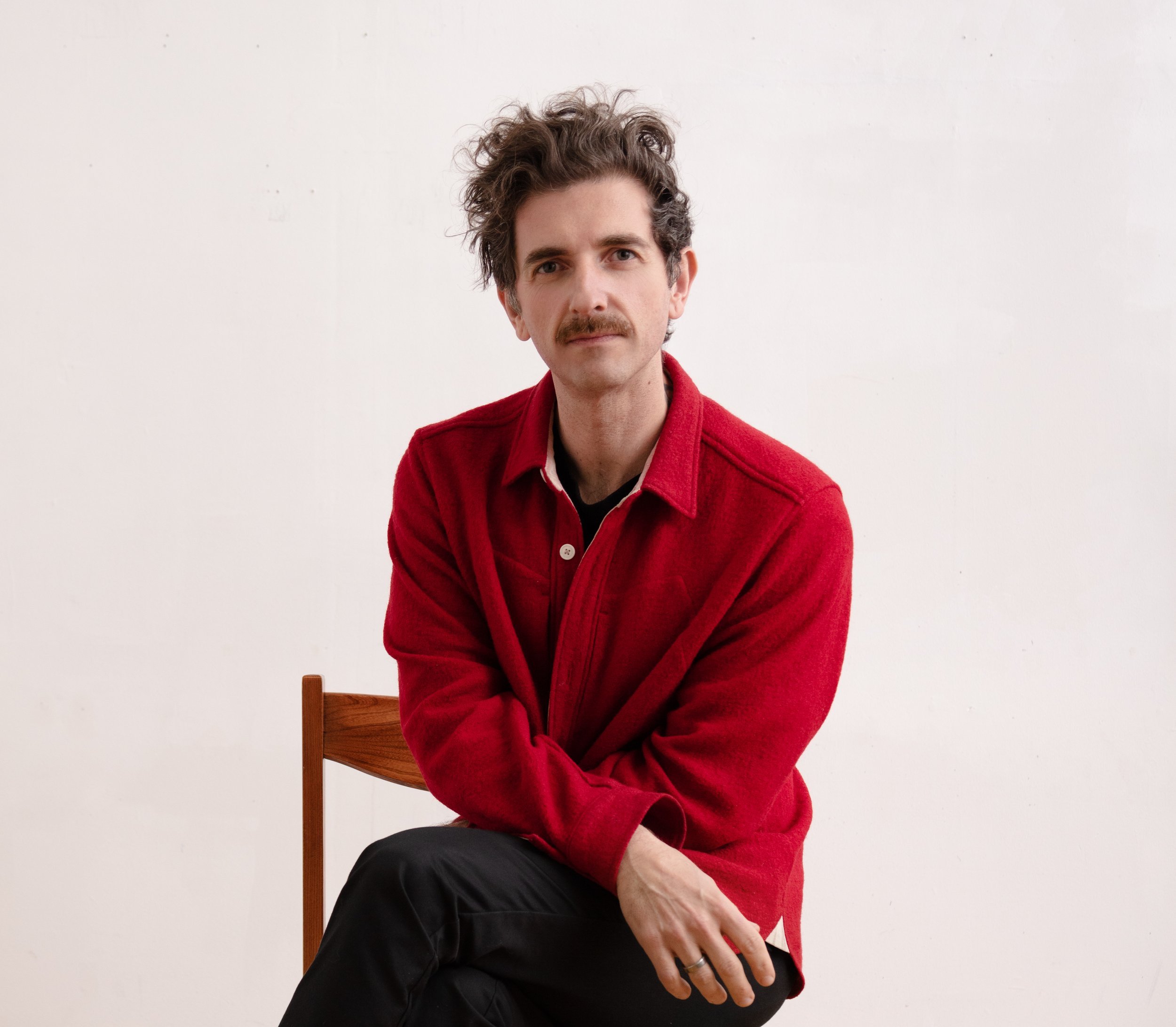ISSUE #1: Derek Liddington
05/29/24
Derek Liddington
The trees weep, the mountain still, the bodies rust
Derek Liddington Calgary Contemporary 2024
Rhiannon Vogl
Installation view, Derek Liddington: the trees weep, the mountain still, the bodies rust. April 10-August 25, 2024, Contemporary Calgary. Photo by Victoria Cimolini.
Lately, we’ve been experiencing the caprices of the weather - dark clouds rolling ever darker across the hillside, spewing shards of barely frozen sleet onto the gnarled ground below. The wind carries more than it should be able to across the grassy contours of the land, whipping everything it touches into an absolutely contorted, anxious-making frenzy. Seconds later - and without warning - sunlight streaks through the ink-blotched sky, drenching us again in a blazing warmth. I tilt my eyes away to spare them the shock; you, however, turn your face directly to the light, remarking aloud, to no one in particular, it was night. It was rust. It was you. It was me. It was skin. It was day.
In 1799, Francisco de Goya published The Caprices (Los Caprichos) a radical series of etchings which depicted an often disturbing, disjointed world, gnarled by what he believed to be the grim reality of his time. In these eighty prints, Goya presented a cast of twisted, contorted characters who variously reflected mounting social, political, and even economic tensions growing between traditional or mythic belief systems and the increasingly modernizing influence of rationality and the Enlightenment. Featuring a wide array of subjects, it is his depictions of the occult - goblins, demons, and monsters - preening, posturing, kinked, and clamouring around and on top of one another - that are the most absorbing images in the set. These creatures share in the vices of humans and reveal the thinness of the veil between reality and fantasy. With eyes wide, the leaves rustled in the fall breeze at dusk, I could see the goblins grip, the devils face and the legs outstretched frantic to escape.
Caprice, coming from the Italian word capriccio, meaning whim or fancy, and earlier from caporiccio “bristling of the hair with fear, shiver of horror, shudder,” in modern day now implies an unpredictable idea, desire or occurrence. Atmospheric shifts, perceptual shifts, emotional shifts, might all be considered caprices - experiences that evoke an instability, a mutability, a variability that cannot always be accounted for in advance. Derek Liddington’s exhibition the trees weep, the mountain still, the bodies rust [Musée d’art de Joliette (2022); Richmond Art Gallery (2022-23); Contemporary Calgary (2024)] conjures a capricious sensation, or perhaps what Matthew Spellberg would call chimeric - the intense feelings of wonder and fear that arise from moving from “the plane of perception to the plane of imagination, from empiricism to phantasm.”(1) Liddington’s paintings - in their mottled, layered shades of maroon, mauve, tangerine and sage - hold us at this threshold - one of memories forgotten or imagined, of psychic allegories and the ephemerality of bodily exploits. Locked together, I blinked. you were there, they blinked. you were gone. they were closer. you were here. I was there. you were gone. leaves gather, arms outstretched.
Here, Liddington compresses dense forest realms, fecund rolling hillsides and minute mycelial tailings, into the flatness of the picture plane, where a frenzy of brushstrokes and glazes create abstractions of the visible natural world that are at once vertiginous and suffocating. The scale of his paintings overwhelms us, but also suck us in - we become engrossed in their minutia and grandeur, without being able to grasp either entirely. Lurking within the ochre, emerald and crimson thickets of these canvases is a giant. It makes shadow-like appearances between the artist’s brushstrokes; it raises itself up to clutch onto the canvas, before sinking down again into the abyss of the forest floor. The giant, once a mythic figure and a source for all we could not explain, lurks now in the underbrush of these artworks, a gargantuan so enormous as to be unseeable, so intertwined as to be undoable.(2)
Goya’s Caprices are here too alongside the giant, as are Rodin’s Three Faunesses, and even a beheaded Holofernes with his hair clutched by Judith. Mining the full depths of western art history, Liddington has dismembered and decapitated portions of these artists’ work, among others, creating an indeterminable, patterned collage of references: muscular, contracting, writhing bodily fragments, which he first sketches intensely, and later transfers onto the painted surface, camouflaging them in dramatic textures akin to those of Édouard Vuillard. Tendons, sinew, and flesh borrowed from these past artists are stitched together, in various states of tension to create the gargantuan body of the giant, itself an aggregation of references for human anxiety, worry and fear. Histories collide within these visual referents, as Liddington, ever aware of his own place within it, disrupts the canon of painting, only to reconfigure it as an amalgam of his own, heightened further by the fact that Liddington’s compositions refuse to stay still, or to capitulate to perspectival logic. Here, we witness the giant in process of fragmentation and remaking, an allegory perhaps, of our own modern time. Concealed by night they lay strewn across the earth’s surface for all to see.
The caprices of the weather roll over the giant’s body, its curves and bones becoming one and the same with the variegated landscape. Its chest heaves with the weight of moss and decomposing peat, its fingers one with the roots of this biome, its breath lingers in the leaves that sway in the canopy. The terrain changes in each canvas, from mud to stone to vegetation, rust, to marble to foliage. This topographical progression speaks also to the time and space - mentally and physically - that the artist was in at the time of their creations. Relying heavily on particular localities to spark new ways of seeing, Liddington’s travels throughout Canada, Spain and Scotland, are also bedded into the cragged strata of these works. Some of his hues - bruised apples, scabbed knees, and wilting petals - come from locales closer to home, while the verdant, vibrancy of jade, emerald, amethyst, and garnet recall landscapes that are oceans away. The giant can hide within each of these amorphous terrains, in lands variously scarred by centuries of conflict, colonial control, and intense agricultural development. The giant here becomes a symbol for the tensions between the mythic and the imperial, the phantasmic and the empirical that are seeded in these places, its body a cypher for conflicts that have never gone away. The marbled form in darkness and light, in bloom and rot, both laugh and cry, they beckon and scream, in love and hate.
And yet, Liddington does not confine the giant simply to his canvases. Over the three iterations of this exhibition the artist has permitted the creature greater and greater freedom to roam within the space of the gallery, overtaking its white walls to sprawl, to writhe, to even dance. Initially, in Joliette, its body took the form of purely abstract shapes - sage green and warm clay brushstrokes applied expressively to create horizontal mounds of colour upon which the canvases could hang; the profile of a sleeping giant - a waist, a chest or shoulder - literally supporting the paintings. In Richmond, Liddington gave the giant a clearer form, with more deliberate sections of olive, mint and peach delineating its reclining torso within the frenzied planes of colour that wrapped the walls. Finally, in Calgary, the giant has been allowed to emerge from the shadows, as part of an immersive, panoramic tapestry. Here Liddington has covered every surface of the space in his signature dynamic brushstrokes, leaning into the
contrast between his chosen pigments of moss, mauve, robin’s egg blue and fleshy salmon to give us nearly full views of the giant’s form. Distinctively, in this final installation of the exhibition, the giant emerges in motion, with muscular calves and thighs, bony ankles and feet encircling the viewer, stirred into movement by the artist’s brush. Gesturing back to Rodin’s bronze sculpture of mythological women, Liddington’s final mural progresses the giant into the realm of the performative, where its movements through these landscapes become at once easier, and somehow more difficult to see. Witness to its freedom, we are now able to perceive its evolution, its expansion, its outstretching. Predictably, its frolic has become just as capricious as the weather. The flowers billowed with each step. our bodies still in the dust.
(1) Matthew Spellberg “The Chimeric Element in Perception: A First Exploration.” Southwest Review, 99 (1), p. 93.
(2) A portion of this text appeared in a different form in my own text “Derek Liddington: The Trees weep…” Border Crossings Magazine. 41(1). pp 118-123.










ABOUT THE ARTIST,
Derek Liddington (he/him)
Born in 1981 in Mississauga, Ontario. Lives and works in Toronto, Ontario
Liddington acknowledges his relationship to the land as shaped by his settler ancestry as a third-generation Canadian.
After obtaining his BFA from Nova Scotia College of Art and Design in Halifax, Nova Scotia where he focused on video and performance, Liddington completed an MFA at Western University in 2007. Liddington’s work holds a continuous interest in cultural memory and its iterations through abstraction, representation and modernist forms of visual language.
Liddington’s work has been exhibited nationally and internationally, including performances in Athens, Greece and Onagawa, Japan, and select presentations in Toronto (AGO), Madrid (ARCO), Berlin (Art Berlin Contemporary), and New York (Frieze Art Fair, NADA). Liddington has had solo exhibitions at Cambridge Galleries (Ontario, Canada), SAAG (Lethbridge, Alberta), AKA Artist Run Center (Saskatoon, Saskatchewan), AGYU (Ontario, Canada), Musée d'art de Joliette (Joliette, Quebec) and Richmond Art Gallery (Richmond, British Columbia). Liddington has had multiple publications on his work, including “the body will always bend before it breaks, the tower will always break before it bends” jointly produced by the SAAG and AGYU and “A Love Story” produced in by Cambridge Galleries for the exhibition “Every moment can be traced back to the first time the sun touched my face”.
A central part of Liddington’s practice is his use of residencies as a means of developing ideas of space and place. These have included residencies at the AGYU (Toronto, ON), AKA artist-run (Saskatoon, SK), Onagawa AIR (Japan) and most recently the Glenfiddich Artist in Residency program. Liddington has been the recipient of numerous public and foundation grants, including support from the Toronto Arts Council, Ontario Arts Council and Canada Council for the Arts as well as being a finalist for the Toronto Friends of the Visual Arts. Liddington currently practices in Toronto, ON. Liddington’s work is represented by: Daniel Faria Gallery (Toronto)
He would like to acknowledge the generous support of the Canada Council for the Arts, Ontario Arts Council as well as the Toronto Arts Council


